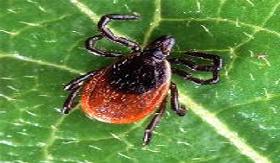It's a New Day in Public Health.
The Florida Department of Health works to protect, promote, and improve the health of all people in Florida through integrated state, county, and community efforts.
Babesiosis
Florida Health
Disease Control- DiseaseControl@flhealth.gov
- 850-245-4444
-
Florida Health
4052 Bald Cypress Way
Tallahassee, FL 32399

Babesiosis is caused by parasites in the genus Babesia. More than 100 species have been reported but only a few have been identified as causing human infections, including B. microti, B. divergens, B. duncani. B. microti is responsible for most infections in the United States. Human babesiosis is endemic in the northeastern coastal areas of the country, with cases also reported in New Jersey, Virginia, Maryland, California, Washington, Minnesota, Wisconsin, Missouri, Georgia, and Mexico. The tick vector, Ixodes scapularis, also transmits Lyme disease.
- SYMPTOMS AND TREATMENT
- BABESIOSIS OCCURRENCE IN FLORIDA
- RESOURCES
Many Babesia infections are thought to be asymptomatic. Among those who become sick, symptoms tend to appear between 1 and 4 weeks after a tick bite and include fever, headache, chills, and muscle weakness. More severe cases are seen in the elderly and those with compromised immune systems. Medication is available for the treatment of Babesiosis.
Babesiosis is not considered a significant human health issue in Florida. However, it is important to be aware of the disease as human cases continue to be diagnosed in northeastern states. As of 2017, Babesiosis is a reportable disease in Florida.



Connect with DOH